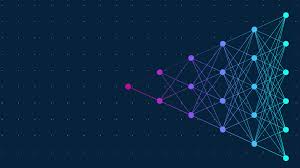Network Programming with Sockets: Building the Foundation for Communication
 David Oshare
David Oshare
In the intricate world of computer networks, sockets stand as the fundamental building blocks for communication between applications. Network programming with sockets delves into the art of creating these endpoints, enabling data exchange between processes on the same machine or across vast distances.
Understanding the Socket: A Two-Way Street
Imagine a socket as a dedicated communication channel, much like a telephone line. It possesses a unique address, a combination of an IP address and a port number, that identifies its location within the network. Just like dialing a phone number, applications connect to specific sockets based on their address to initiate communication.
Socket Types: Choosing the Right Tool for the Job
The world of sockets offers two main types:
TCP Sockets: These reliable connections guarantee in-order delivery of data, making them ideal for applications requiring accurate and complete information exchange. Think of them as sending certified mail, ensuring every packet reaches its destination.
UDP Sockets: These connectionless sockets prioritize speed over guaranteed delivery. They are suitable for applications where occasional data loss is acceptable, like real-time streaming or online gaming. Imagine sending postcards – they might arrive out of order or even get lost, but the focus is on speed.
Building Connections: The Handshake Ritual
Establishing a connection between two sockets involves a three-way handshake:
SYN: The client sends a SYN (synchronize) packet to the server, expressing its desire to connect.
SYN-ACK: The server acknowledges the request with a SYN-ACK (synchronize-acknowledge) packet, indicating its readiness.
ACK: The client sends an ACK (acknowledge) packet, confirming the connection is established.
This handshake ensures both sides are synchronized and prepared for data exchange.
Exchanging Data: The Information Flow
Once a connection is established, applications can send and receive data through the socket. TCP sockets provide a reliable stream, ensuring data arrives in the same order it was sent. UDP sockets, on the other hand, send individual datagrams, which may arrive out of order or even get lost.
Beyond the Basics: Advanced Socket Concepts
As you delve deeper into socket programming, you'll encounter advanced concepts like:
Socket Options: Fine-tuning socket behavior for specific needs, such as setting timeouts or enabling data encryption.
Non-blocking Sockets: Handling asynchronous communication, allowing applications to perform other tasks while waiting for data to arrive.
Socket Libraries: Utilizing high-level libraries provided by programming languages like Python (socket module) to simplify socket programming tasks.
Unlocking the Power of Sockets:
Mastering socket programming opens doors to a vast array of network applications:
Building Web Servers: Creating applications that serve web pages and handle user requests.
Developing Chat Applications: Enabling real-time communication between users.
Implementing Network Games: Building online games that require data exchange between players.
Constructing File Transfer Tools: Creating applications for transferring files between devices.
In Short, socket programming forms the cornerstone of network communication, empowering you to build applications that interact and exchange data across networks. By understanding the core concepts and delving into advanced techniques, you can unlock the potential of sockets to create powerful and versatile network applications. Remember, the more you experiment and explore, the more adept you'll become at wielding this essential tool for network communication.
Subscribe to my newsletter
Read articles from David Oshare directly inside your inbox. Subscribe to the newsletter, and don't miss out.
Written by

David Oshare
David Oshare
I am a Python developer with 2 years of experience. I love building things with code and sharing that knowledge with others. Looking to collaborate and keep learning!